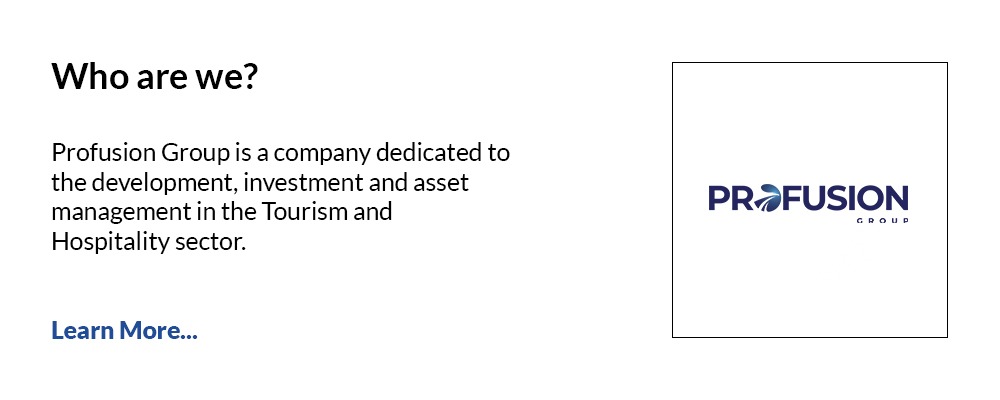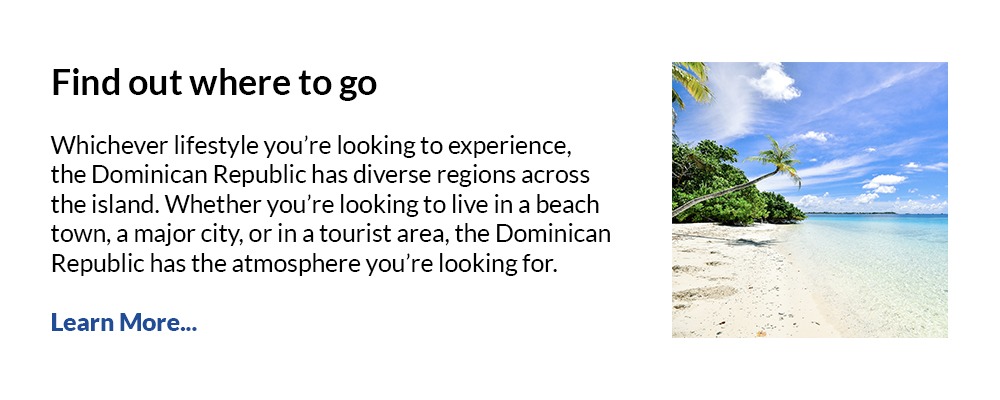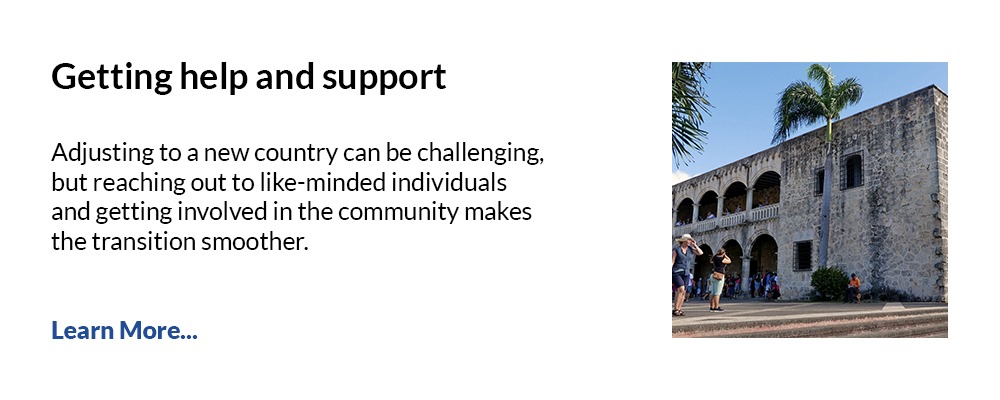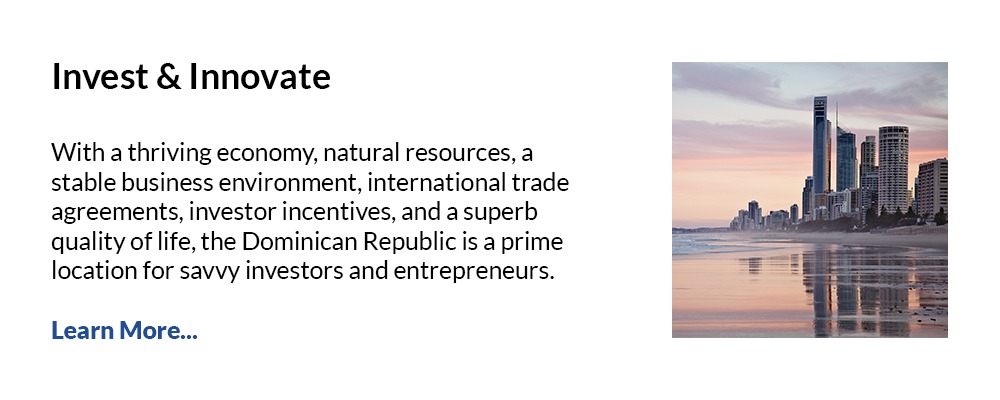Key Market Data
The Dominican Republic is recognized as a leading tourist destination with over 250 miles of very famous beaches and with more than 1,000 miles of coastline and five international cruise ship ports. As the second country in Latin American and the Caribbean leading in connectivity in terms of transport, logistics, and telecommunications infrastructure, the Dominican Republic has a strategic geographical location with links to the America’s and the rest of the world having over 270 international flights daily through eight different airports and twelve seaports that allow for goods to be transported worldwide in less time.
From January to July 2019 there has been a slight drop in the tourist flow compared to the same period of 2018, with a decrease of -0.45%, 3,560,212 tourists have arrived to date July 2019. The GDP (Gross Domestic Product) accumulated from January to July 2019 is 4.7% according to figures from the Central Bank of the Dominican Republic. Cumulative inflation from January to September 2019 is 1.52%, remaining one of the region’s casualties. There are tax incentives for investments with exceptions up to 100% in internal tax payments, income taxes, incentives in free zones, and releases of payment of bank fees. On top of tax incentives for investments, there are multiple international trade agreements (see International Trade Agreements tab), benefiting international business on a large scale. Recent agreements with the Chinese government are underway that will increase the influx of tourists and investors to the country.
The Dominican Republic is a historical and cultural country with a stable and secure legal and institutional framework perfect for foreigners looking to invest.
Investing in the Dominican Republic tourism sector brings benefits beyond a constant flow of tourists to the island. The boom in tourism began in 1971 when a law was put in place that granted incentives to investors willing to risk their capital in a new country that, at the time, was ranked low on the destination location scale for tourists.
Nowadays, the Dominican Republic is an undisputed leader in tourism and foreign investors still receive incentives benefiting continued investment in the tourism sector. Law 158-01 of Tourist Incentive, modified by Law 195-13, grants investors wide tax exceptions for a period up to 15 years for new projects that meet an established set of requirements.
These incentives favor new investments in the following tourism outlets:
- Hotel facilities, resorts, and hotel complexes
- Construction of facilities for conventions, fairs, international congresses, festivals, shows, and concerts
- Construction and operation of amusement parks, ecological parks and theme parks
- Construction or operation of port and maritime infrastructure at the service of tourism
- Constriction or operation of tourist infrastructures, such as aquariums, restaurants, gold courses, and sports facilities
- Small or medium-sized businesses whose market is mainly based on tourism (handicrafts, ornamental plants, tropical fish, breeding farms of small endemic reptiles, etc.)
- Construction of basic infrastructure for the tourism industry, such as aqueducts, treatment plants, environmental sanitation, garbage collection and solid waste
- Tourist accommodations or other facilities that complement them, such as villas, lots, apartments, mooring for boats, etc.
As for existing hotels and resorts, those with more than five years of construction benefit from a total exemption from the payment of the transfer tax of industrialized goods and services (ITBIS) on equipment, materials, machinery, and personal property necessary for the modernization and renovation of its facilities.
Hotels and resorts with over fifteen years of construction being rebuilt or remodeled in over 50% of their facilities also receive the same advantages of tax exemptions as new projects.
CONFOTUR: The Tourism Development Council
The Tourism Development Council (CONFOTUR) is a governmental institution in charge of examining and approving the applications of investors and companies wishing to take advantage of the provisions of the Tourism Incentive Law (Law 158-01), and to supervise the investor’s and/or company’s compliance. Once CONFOTUR approves an application, the investor must initiate the work of the approved project in a sustained and uninterrupted manner within a period of three years. Failure to do so results in a loss of all benefits of the law.
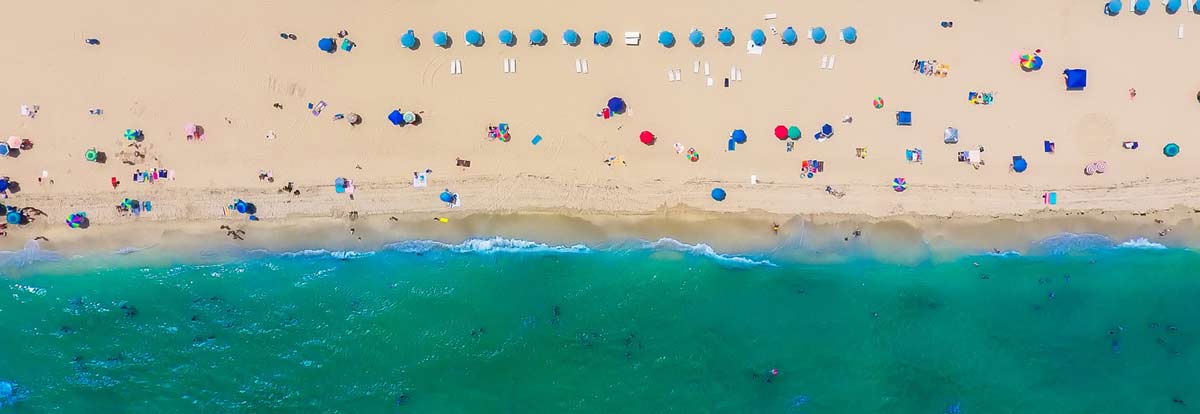
The Dominican Republic has experienced one of the highest growth rates in the region over the last few years driven by the tourism and real estate development sectors. As a middle-income country, significant inequalities still exist with nearly one-third of the population living below the poverty line; however, the country has made significant progress in this area.
Economic growth has been stimulated by the recovery in the U.S., the low petrol prices, the credit growth, and a developing dynamic employment market. Due to the movement of tourism and private consumption, economic growth is also expected to close strongly during 2019 and this is demonstrated by the accumulated GDP in the first half of 2019 of 4.7%.
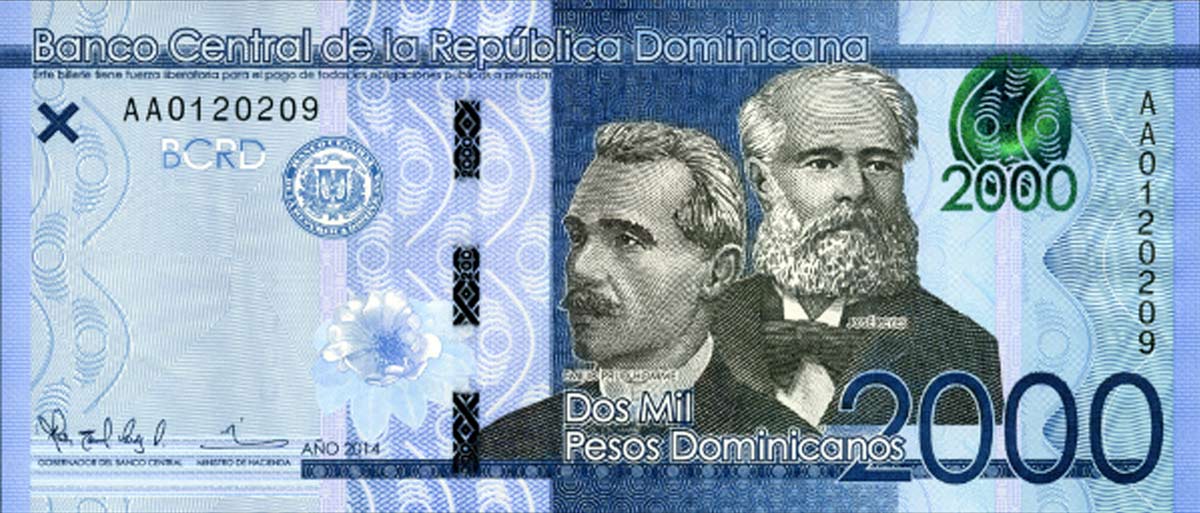
The Dominican Republic is a representative democracy following the classic model of the division of powers into three branches: Executive, Legislative, and Judicial. Every four years, elections are held 2020 being the next election period. The country has a modern Constitution, enacted in January 2010, and in June 2015, a new amendment was added to the Constitution authorizing the President to run for consecutive terms.
POLITICAL OVERVIEW AT NOVEMBER 2019
The latest declarations in electoral politics regarding the elections next year suggest that the presidency of the republic will be contested between the ruling party and the project of former president Leonel Fernández, then cite some statements and facts that describe the positions and expectations of what until now are the two main options to achieve the triumph of the presidential elections in 2020.
The presidential candidate for the ruling Dominican Liberation Party (PLD), Gonzalo Castillo, assured this Thursday (October 31, 2019) that he will take the victory again to this political organization and that in May 2020 he will win the first round elections.
We will create a country of well-being and hopes for all Dominicans and Dominicans. Together, government, private sector and the Dominican people, we will accelerate the engine to the maximum to eradicate poverty in the Dominican Republic, ”said Castillo, according to a press release.
He also said that upon his arrival at the government he will continue and consolidate the work of President Danilo Medina, who, he said, has done an exceptional job with the “surprise visits”, which he promised to duplicate them, also going on Wednesdays.
Castillo explained that he is not one of those leaders who are distant from the public, who cannot be touched, who say beautiful speeches and dress well: “I am not that leader; on the other hand, a leader is a simple, humble man, close to the people, who wears short-sleeved shirts, who speaks little and works hard, I am that leader. ”
Radhamés Jiménez, coordinator of the political project of Leonel Fernández, said that nothing prohibits the former president of the Dominican Liberation Party (PLD) from competing in the next presidential elections of 2020 for another organization.
He said that the Constitution of the Dominican Republic is above all and there is a fundamental right established in Article 22. It ensures that the Law of Political Parties “does not prevent him from opting for the presidency, when he was only a candidate.”
“He has not been declared a candidate, he was a candidate. Unfortunately, there was a fraud that had different modalities, with massive purchases of ID cards, but that was not enough and electronic fraud was used, but it was more than evidenced that the result of this anomalous and fraudulent situation, the companion Fernández was not elected candidate ” , Held.
He said the objection of the Dominican Liberation Party (PLD), that Leonel Fernández chooses the presidency, “is because they are afraid.”
He emphatically stated that “Fernández is going to be president of the Dominican Republic and that is the decision of the people.”
How is the political system of the Dominican Republic? The Dominican Republic is a representative democracy that follows the classic model of division of powers: executive power, legislative power and judicial power. Every four years, elections are held (the next will be in 2020). The country has a modern Constitution, promulgated in January 2010, and a new amendment was added to it in June 2015, to allow the president to govern in consecutive periods.
Analysts point to two key elements in the internal PLD process:
1-Leonel Fernández underestimated Gonzalo Castillo.
2-Gonzalo Castillo represented a strange narrative. Be the candidate of the government and at the same time the candidate of change. This is difficult to handle in an election campaign. However, it was managed and won.
How the firm Datincorp achieves a difficult and close result in the Dominican Republic.
The Jesus Seguías pollster was right in the forecasts in the primary elections of the Democratic Liberation Party, PLD, in the Dominican Republic. It was a close choice. And here is the point. How difficult it is to offer such a tight forecast and then the vote confirms. The process was so close that it unleashed an internal struggle. But the waters have already calmed down and there is a candidate, Gonzalo Castillo, who defeated a leader. Nothing more and nothing less than former president Leonel Fernández.
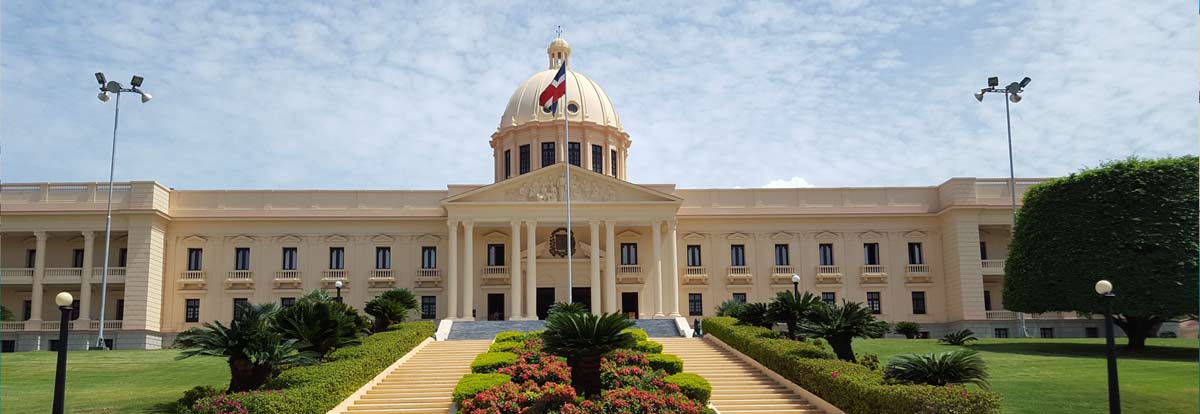
The proper management of water resources, better governance and the adequacy of the legal framework are some of the key elements needed by the Dominican Republic to find a feasible solution to the problem of water.
“The problem of mitigating the current water situation in the Dominican Republic is management, not infrastructure deficit. In the country it is not running out of water, rather without time for adequate management of resources at the national level, ”pondered the adviser of Waters of the Executive Branch.
Reynoso said that for the construction of the 13 largest dams in the country, US $ 1,182 million have been invested to store a total of 2,100 million cubic meters of water.
In the case of the Dominican Republic, taking care of the areas based on those areas where from the point of view of the investor is competitive, you can define the difference between success or failure to attract capital that helps generate wealth. And the three main sources for this in this second decade of the 21st century are still tourism, free zones and remittances.
The longest road project so far is the one developed eastward. It began with the construction of the Las Américas highway to the height of San Pedro de Macorís, about 80 kilometers. The successive extensions that culminated in the inauguration of the Bavaro-Miches road and, before, the Coral Highway, with the San Pedro and La Romana ring roads included, led the length of the East corridor to 280 kilometers. Thanks to this, the journey between Santo Domingo and Punta Cana has been reduced by around 50% in time. More or less the same reduction occurs in the route between Bavaro and Miches. And La Romana is an hour from the capital — a little more to Bayahibe, being that before having this infrastructure they could be used between one hour and 45 minutes and two hours.
These results mean that the Dominican Republic has a better road network than most of its direct competitors, which helps it build a reputation as a country with displacements, a priori, faster, safer and less expensive, and that reaches the investor. which, for example, is considering placing its capital in the tourism sector or in the free zone sector, to mention two of the main engines of the national economy. In both situations, the reputation of the Dominican road network would be better than that of other countries that have worse indicators. It would be a positive factor when assessing where to make the investment.
The RD Electric System is on the way to overcome the five most important challenges to achieve the objective of a reliable, stable electrical system, with acceptable quality indicators and at reasonable prices. What makes it one of the most reliable in the region with an annual growth of 3.5% on average according to the CDEEE of RD
The improvement of the electric service in the country is aimed at overcoming these five challenges:
- High energy losses,
- The incomplete supply,
- The financial deficit,
- The growing demand and
- The high dependence on petroleum derivatives as generation fuels.
In this objective, the Punta Catalina Thermoelectric Power Plant (CTPC) has the characteristic that with its entry into the system it will directly affect those five challenges, ensuring that this makes it essential for the process of improving the national electrical system. The commissioning of Punta Catalina simultaneously affects these five challenges of the national electricity sector. The productive sector expects from the electrical system:
- Availability of low-cost energy to meet demand;
- Achieve a better competitiveness among the Agents of the System so that generating and distributing companies have surplus energy available to hire;
- An efficient generation matrix with production costs that allow the availability of energy at competitive prices;
- An electric power system with hot and cold reserve to maintain a stable and safe service during breakdowns and
- Scheduled maintenance plans and stable electrical system with minimal failures.
The attributes of the Punta Catalina Thermoelectric Central Project plant, ”in an activity organized by the Ministry of Public Administration. Punta Catalina will add 752 gross megawatts of electricity to the system.
The projected demand at 2030 exceeds 4,000 megawatts. While it is true that they can be updated, loosely, it is no less true that work must continue to respond to demand growth.
In line
In the companies of the electrical sector they are working with enough harmony.
Offer and demand
Between January and December 2018, the distribution companies supplied 86.2% of the demand, according to the data offered by the CDEEEE.
One of the aspects that has characterized the world in recent years is the development of telecommunications and the use of the internet. The Dominican Republic is no exception to this trend. With the increase in the use of mobile telephony and the internet, telecommunications in the Dominican economy are increasingly gaining more participation in the lives of citizens.
The number of registered accounts that received some type of telecommunications service is about 19 million, mainly focusing on accounts with internet access (+ 7 million), followed by Prepaid accounts (exceeding 7 million). Prepaid accounts are the second most requested service in the country, however, they have shown constant reductions in recent years.
The number of fixed local telephone lines also decreased from 2016 to 2017. In December these accounts reached their highest reduction, registering a year-on-year contraction of -7.75%, from 1,123,034 accounts in December 2016 to 1,035. 959 in 2017.
The importance that IP lines have gained ─which work as a substitute for fixed telephony by integrating voice and data communications into the same network─. In December 2017, these accounts grew 32.35% in year-on-year terms, which meant a year-end closing with 293,893 IP line registrations.
In addition to this, the accounts with internet access, service with the largest number of registered accounts, show a development similar to that of the IP lines with an interannual variation of 15.35% as of December 2017.
Who are the key participants in this sector?
From the point of view of suppliers, Claro leads the sector with a 54% market share, followed by Altice Dominicana with 35%. However, when viewing the service provided, it is notable that Tricom (currently Altice) leads the market for IP Lines with a 50% share, while Claro ranks second with 45%. In the internet industry, Claro and Altice are the main providers, with approximately 90% of the market registered in their services.
What to expect from this sector?
It is predicted that fixed telephony will continue to be replaced by IP lines in the coming years. Likewise, the impact that Altice has on this is expected to increase, due to investment plans that this company has planned for the next four years, so that telecommunications in the Dominican Republic will continue to develop and gain more participation in national production.

Invierte en República Dominicana, haz negocios con el mundo
Descubre por qué

